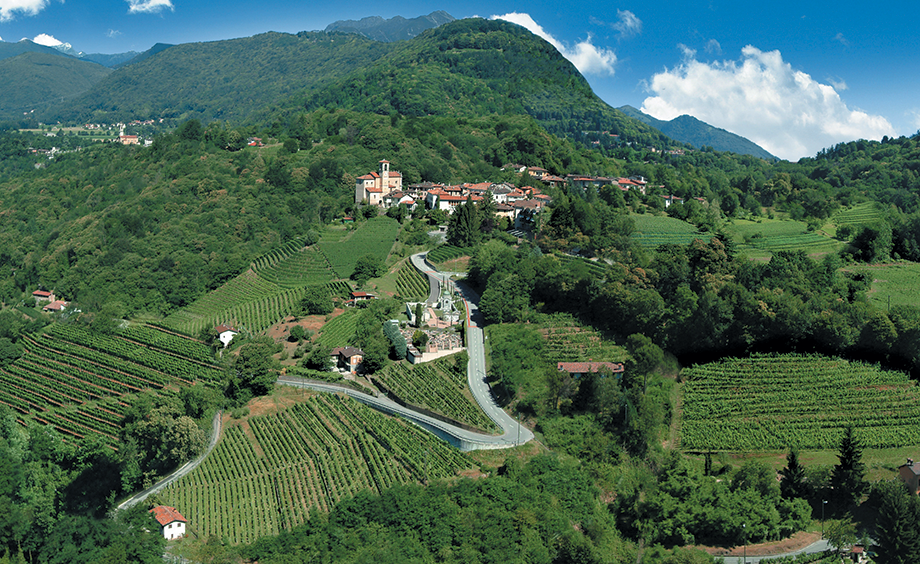Ticino : A wink from the south of the Alps


A linguistic region in itself, a vineyard in itself, the only Swiss vineyard south of the Alps, it is a fortress of Merlot in a Mediterranean climate. With its 1,092 ha of vines decorating the landscape, it is the 4th largest wine-growing canton in Switzerland.
Ticino consists of the Sopraceneri and Sottoceneri. Sopra to the north and Sotto to the south of Monte Ceneri. It's not just a simple distribution around this mountain. In the Magadino plain, north of the Sopra- and Sottoceneri boundary, there is a fissure forming the boundary between the tectonic plates of Europe and Africa. It is therefore not surprising that the soils and climates are different but also that the structures of the vines vary. While in Sopraceneri we mainly find small terraced plots on acidic soils, in the south, larger plots on gneiss soils are very common. Privileged, Ticino benefits from more than 2,200 hours of sunshine per year and benefits from a Mediterranean climate. However, anyone who believes that in the south it is sunny every day must be wrong. Heavy rainfall, particularly in summer, challenges Ticino winegrowers and makes the practice of organic cultivation complicated.
The palette of Ticino grape varieties is quickly read, because it is monochrome. Merlot, Merlot and Merlot. Even white wine is produced from this grape variety. Even if Merlot is widely established in Ticino, it was only introduced there at the beginning of the 20th century, following the phylloxera crisis, and Ticino winegrowers made it a specialty. Merlot: pure product of high class wines. Today, Ticino winegrowers are taking more and more pleasure in cultivating white grape varieties such as Chardonnay or Sauvignon Blanc . An indigenous grape variety has timidly remained at Sopraceneri: La Bondola. Some producers make it a wine of character which expresses spicy and morello cherry notes. However, Bondola is often blended with Merlot or other grape varieties to produce “Nostrano”. Plots of American grape varieties resistant to phylloxera and cryptogamic diseases are still quite widespread. Some producers make it into a sparkling wine with intense forest fruit aromas, but most distill these grapes into grappa.